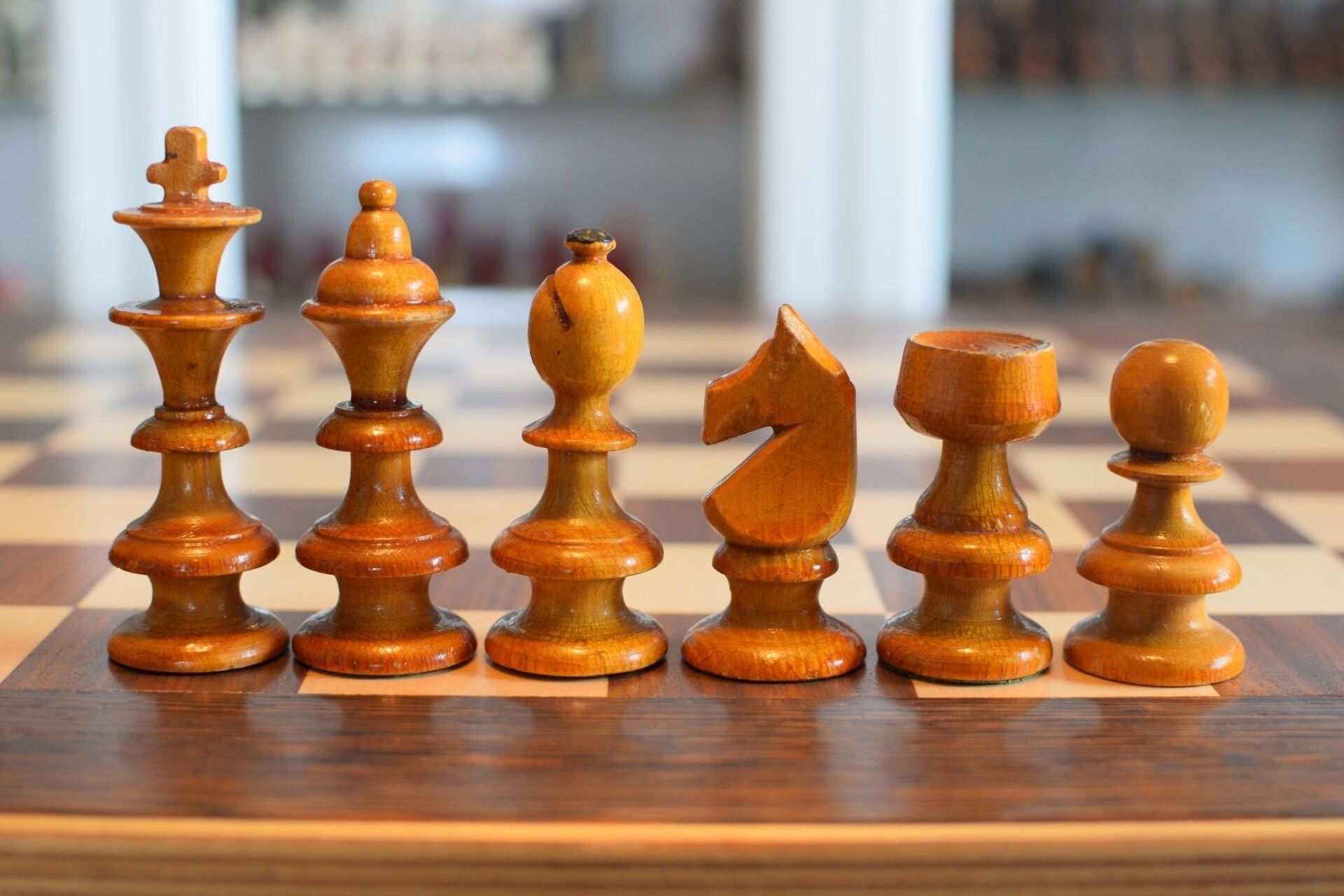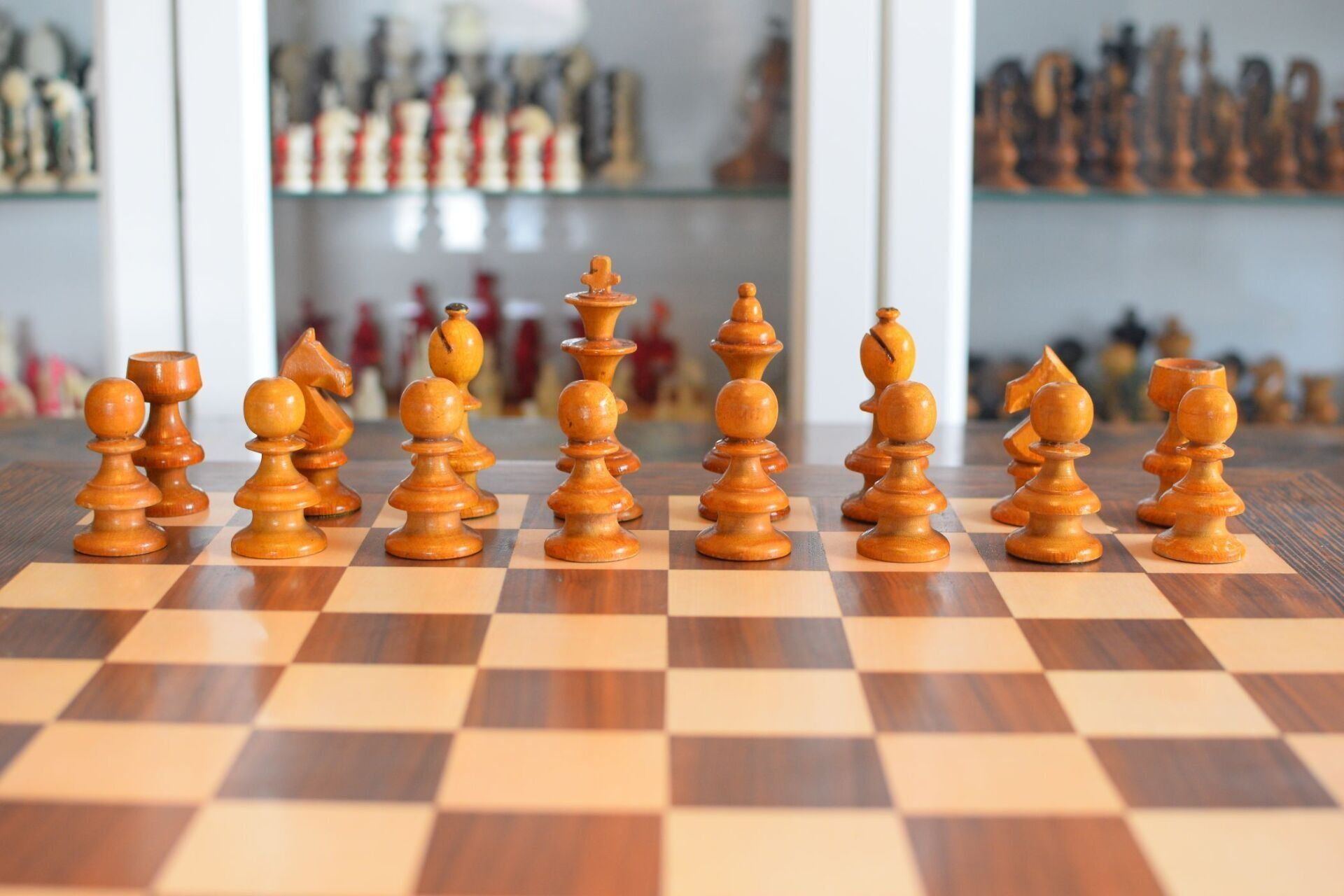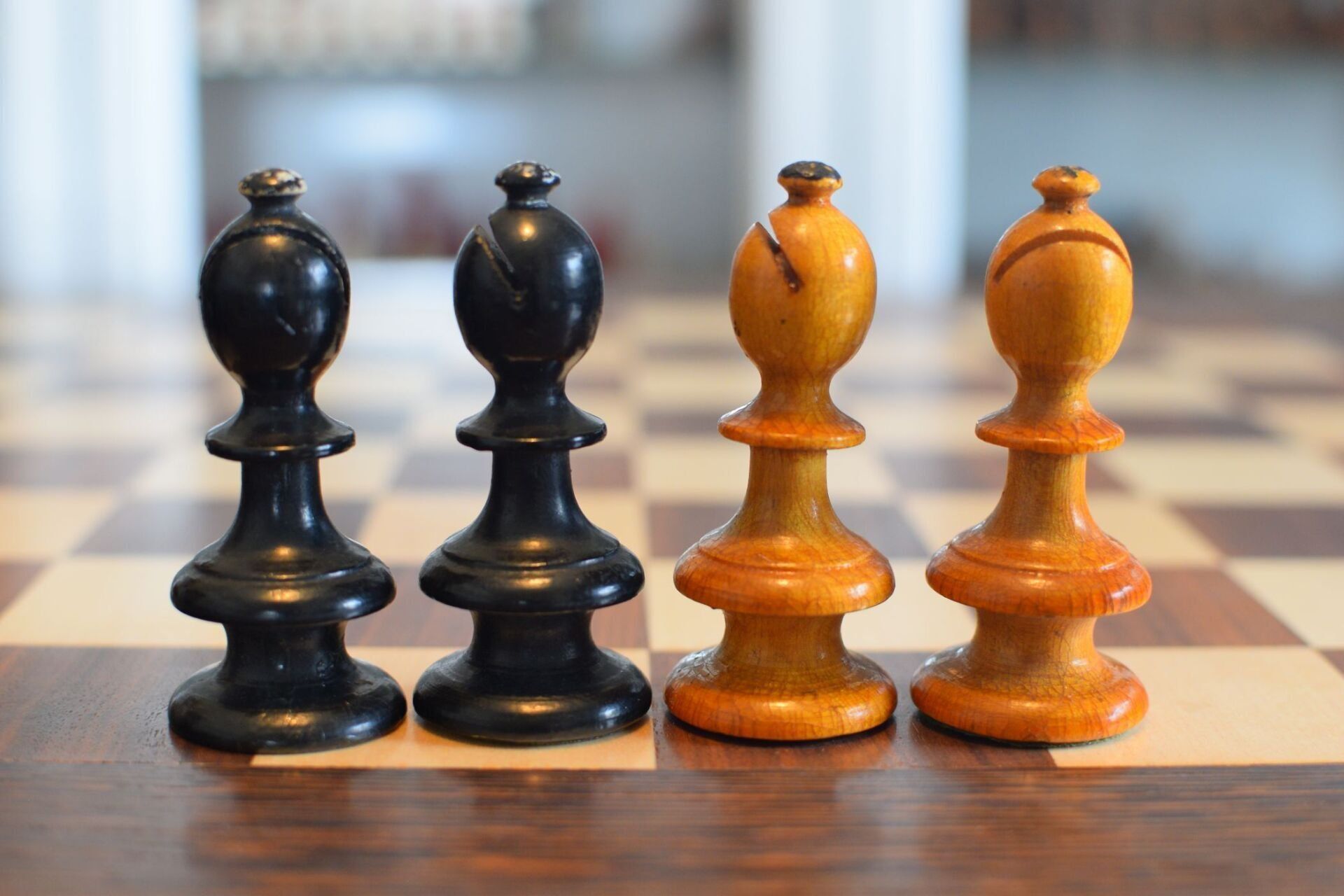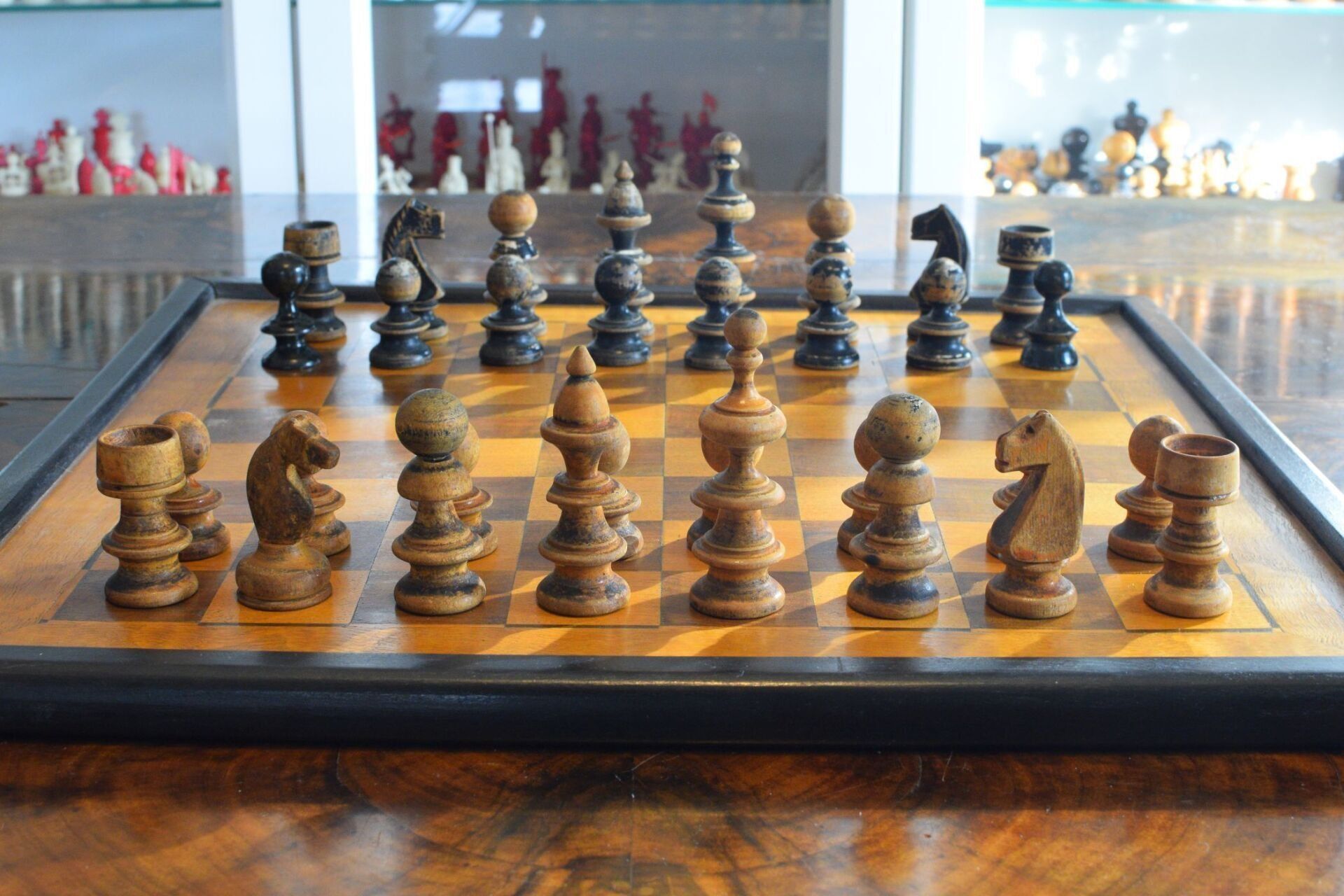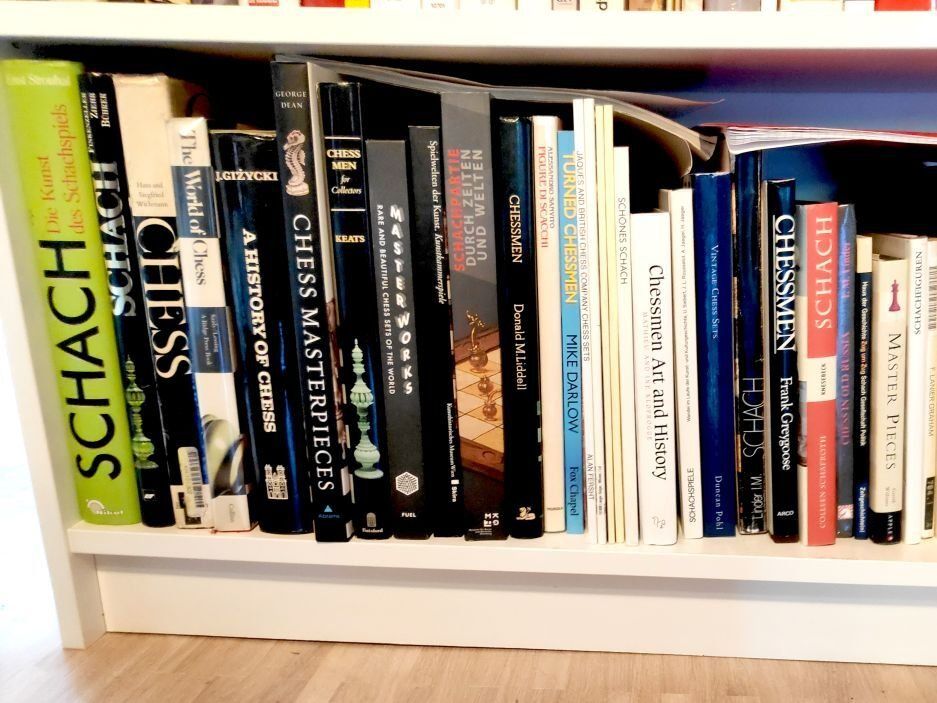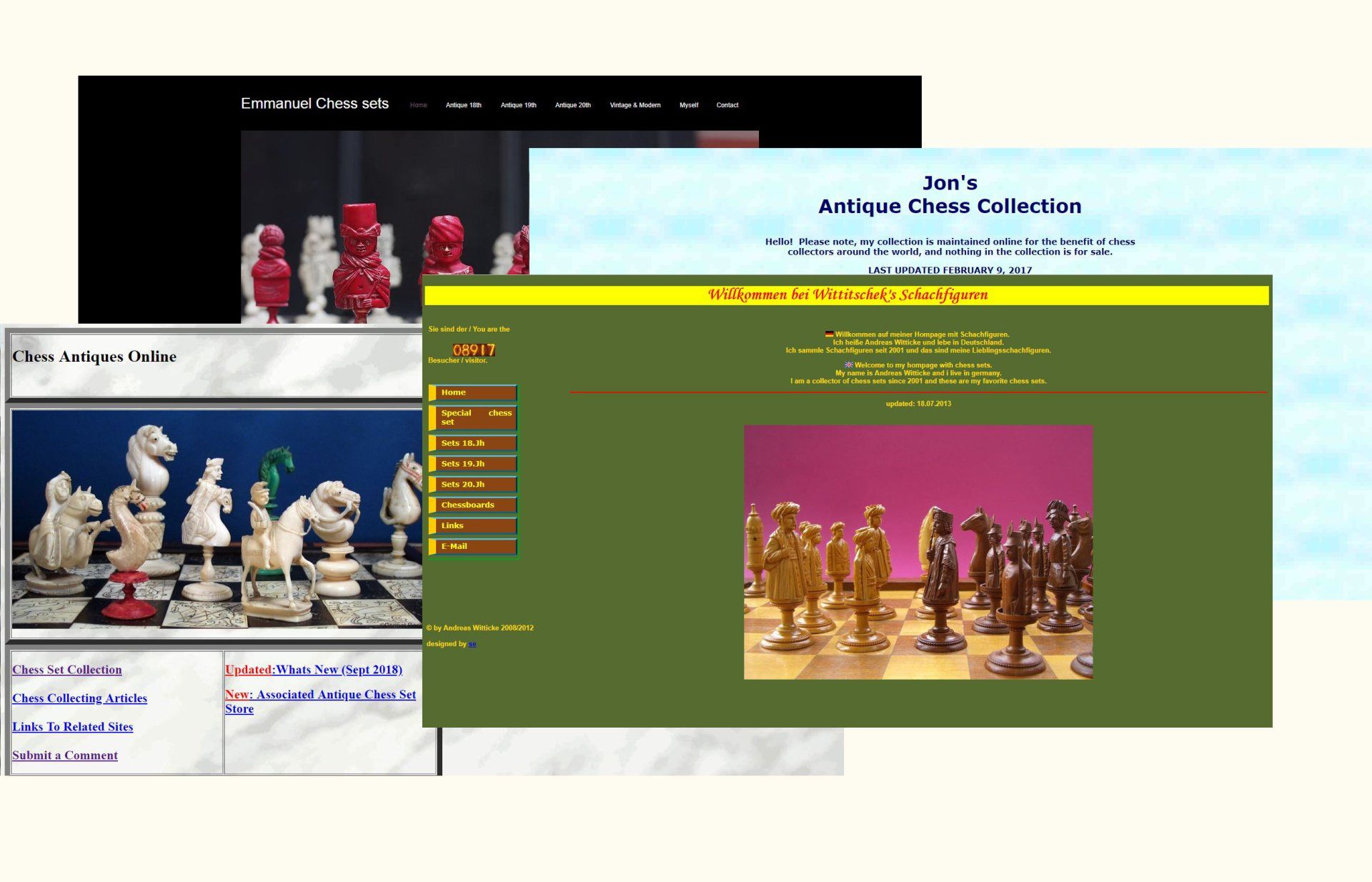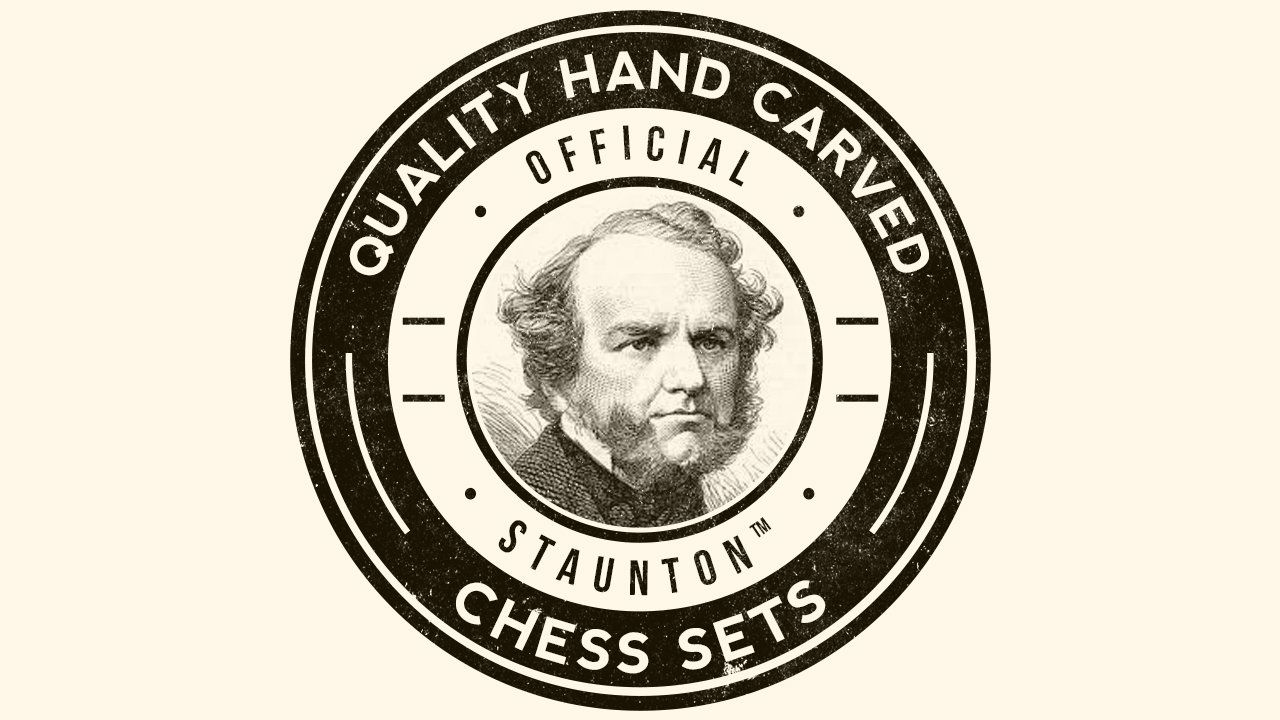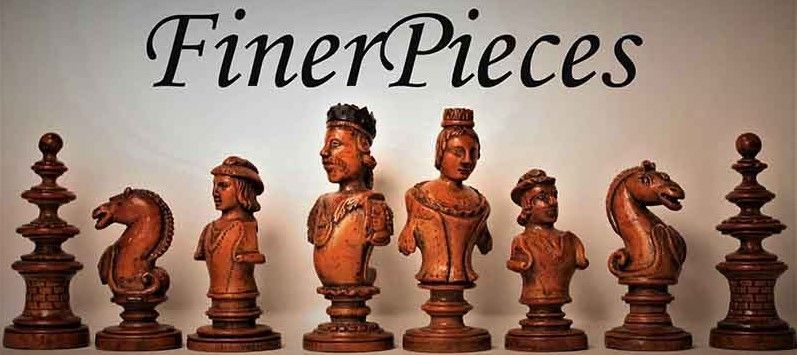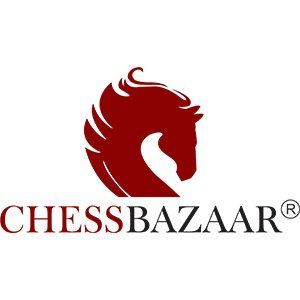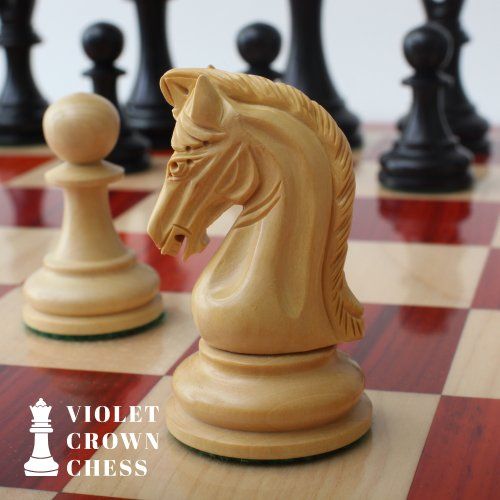Romanian "Modern Coffee House" Chess Set, 1970's
Here is a chess set from the 1970's in a modern Romanian interpretation of the coffee house style. After president Ceausescu opposed the Warsaw Pact invasion of Czechoslovakia in 1968 in which Romania didn’t take part, the country enjoyed a period of liberalization and economic, social and cultural wealth. This social and cultural liberalization reflected itself even in the shape of chess pieces. While all countries in the Eastern Bloc rid their chess sets from any religious symbolism or design features that had too close a connection to the western Staunton design, such as crosses on the kings or mitre cuts in the bishops (features not even the Austrian coffee house style had), this chess set has all of that. The kings have cross finials, the fools turned into ‘Staunton-ized’ bishops with mitre cuts (and no opposite army colour of the head from the factory but with traces of after-market paint since Romanians apparently were used to and required their Fools to have the opposite army colors). Nevertheless, the relation to the Austrian coffee house style is obvious, not only in the multi-tiered galleries on the kings with a mix of convex and concave turnings, but also in the shape of the queens' crowns and the emphasized rooks. Another interesting feature is the massive size of the pawns, which reach the same height as the rooks and knights.
